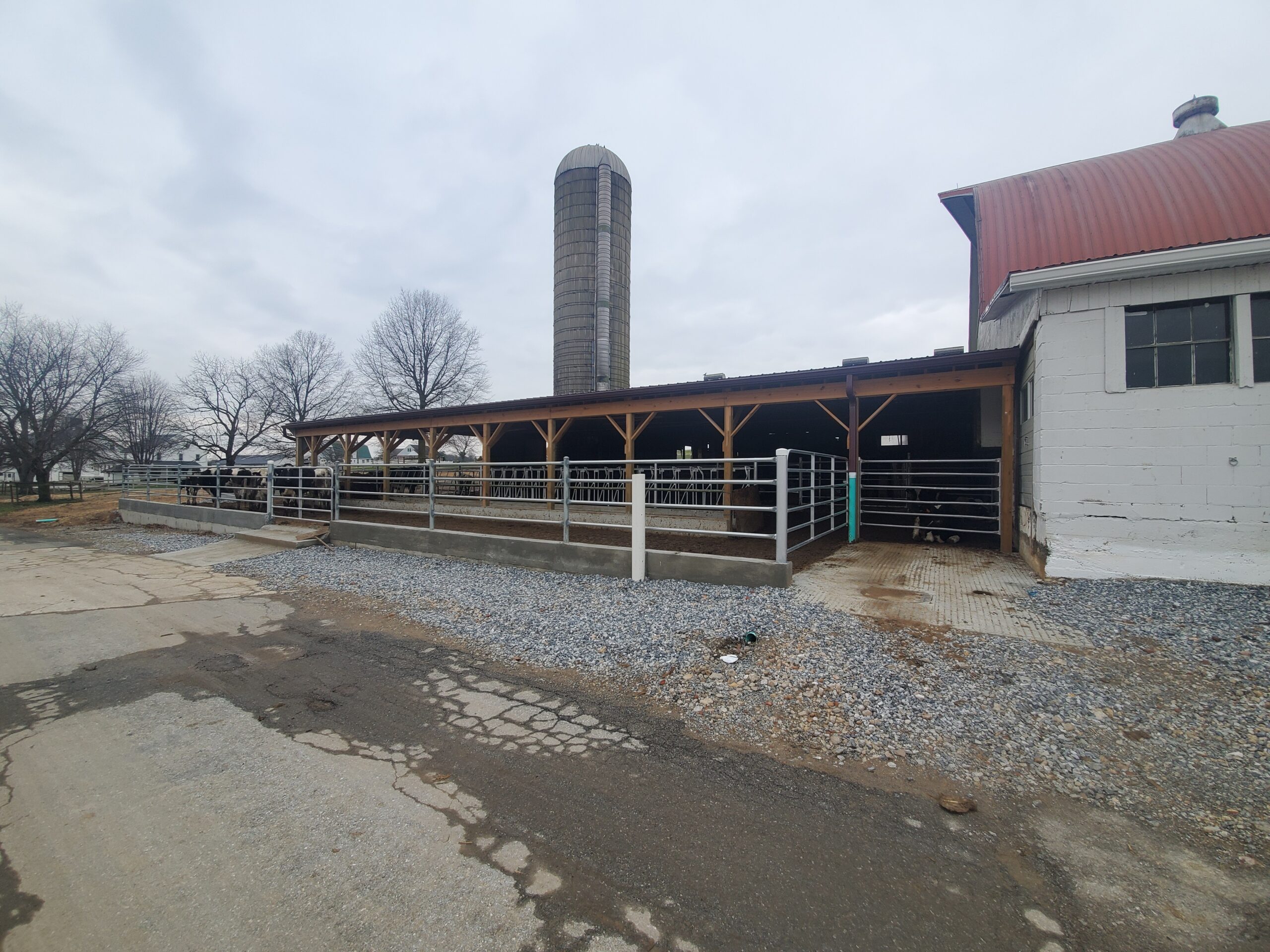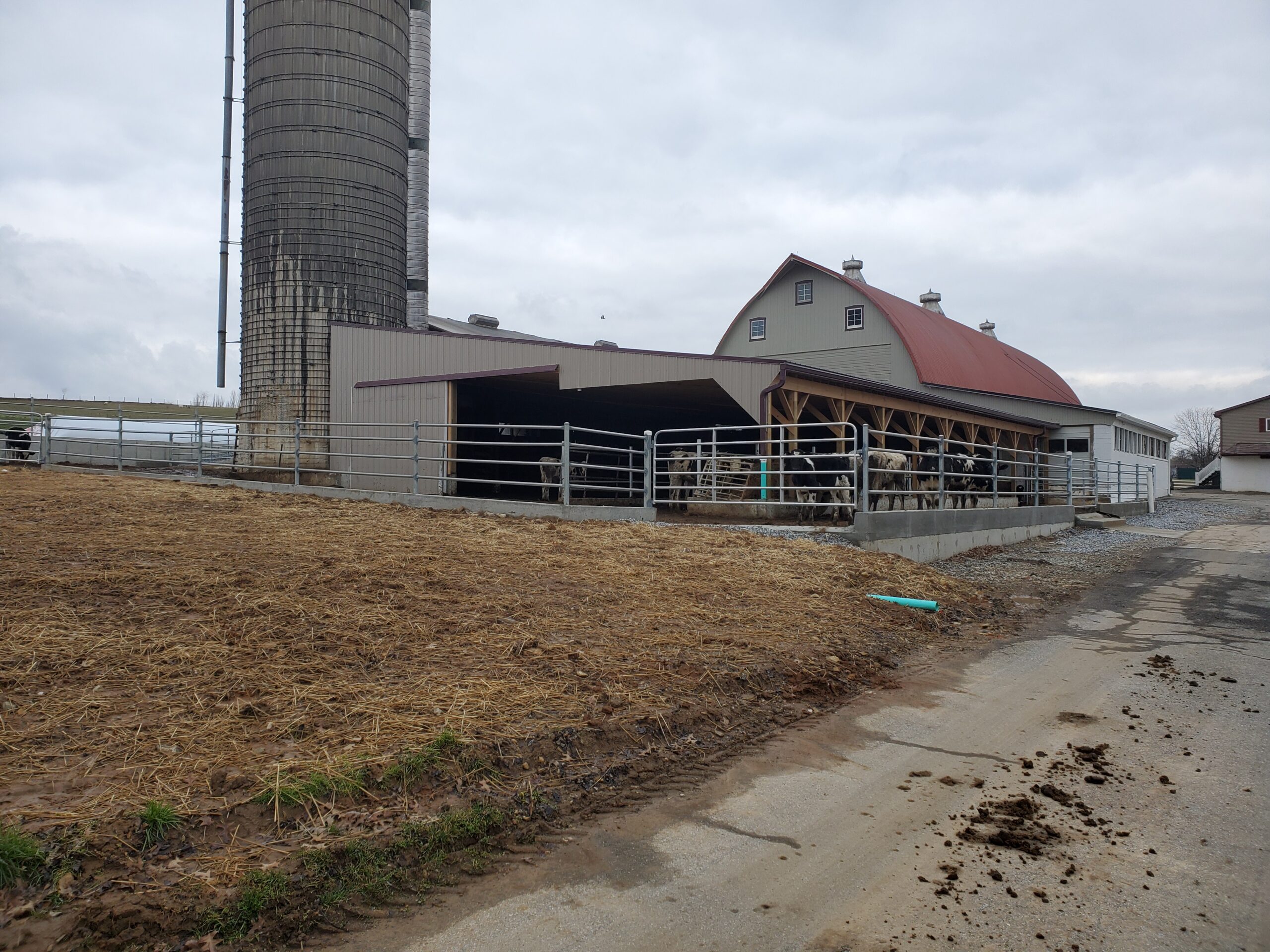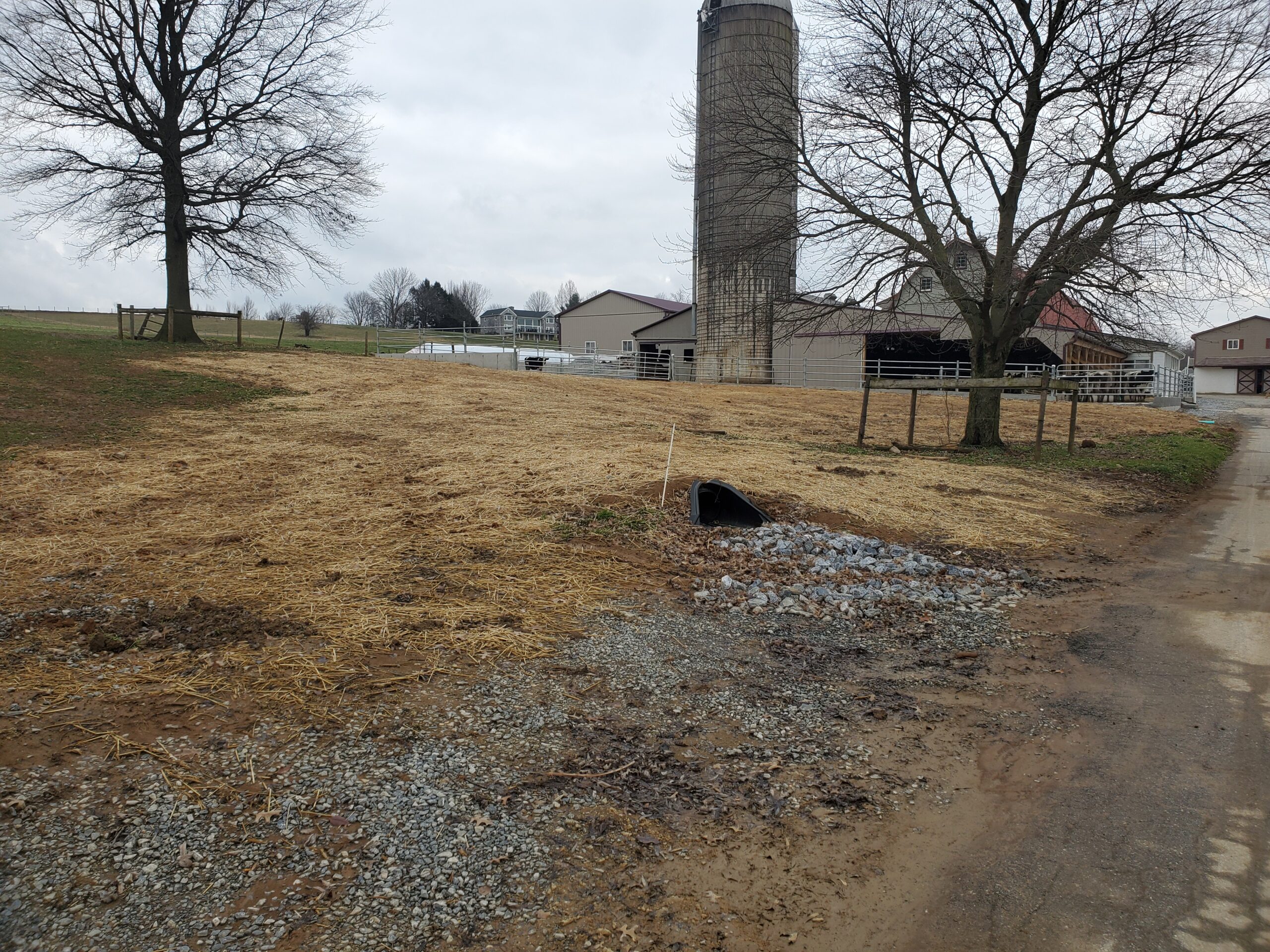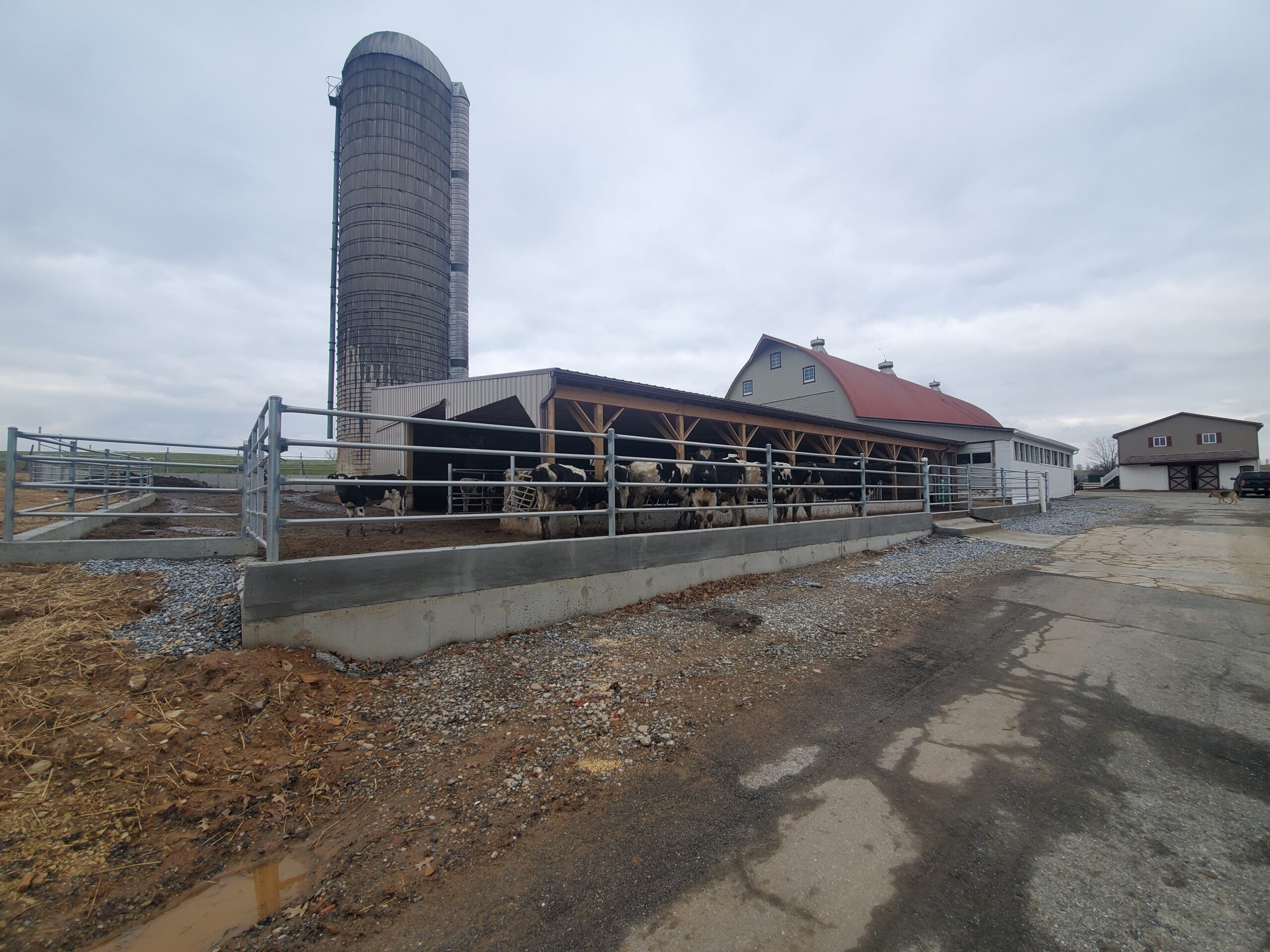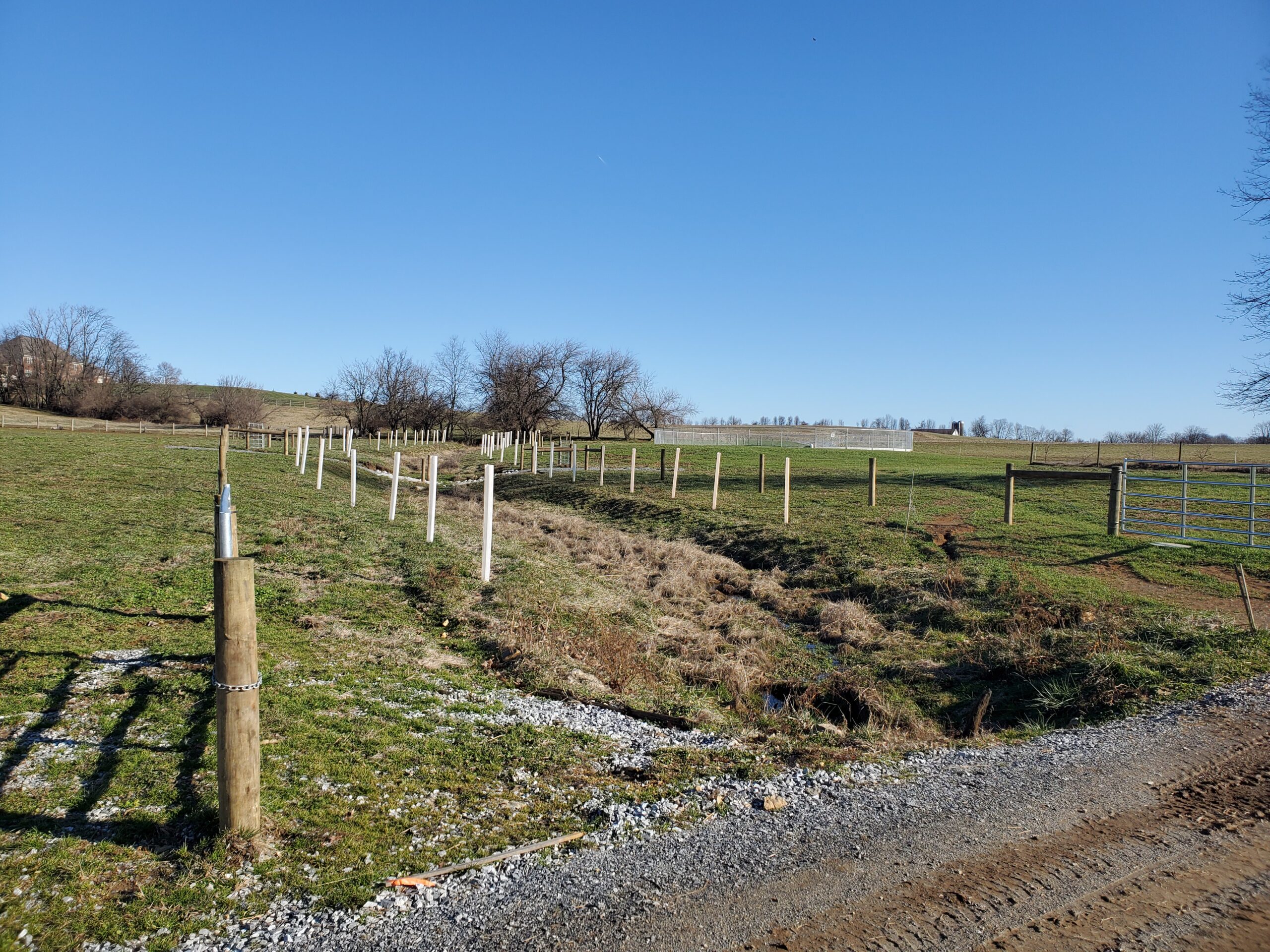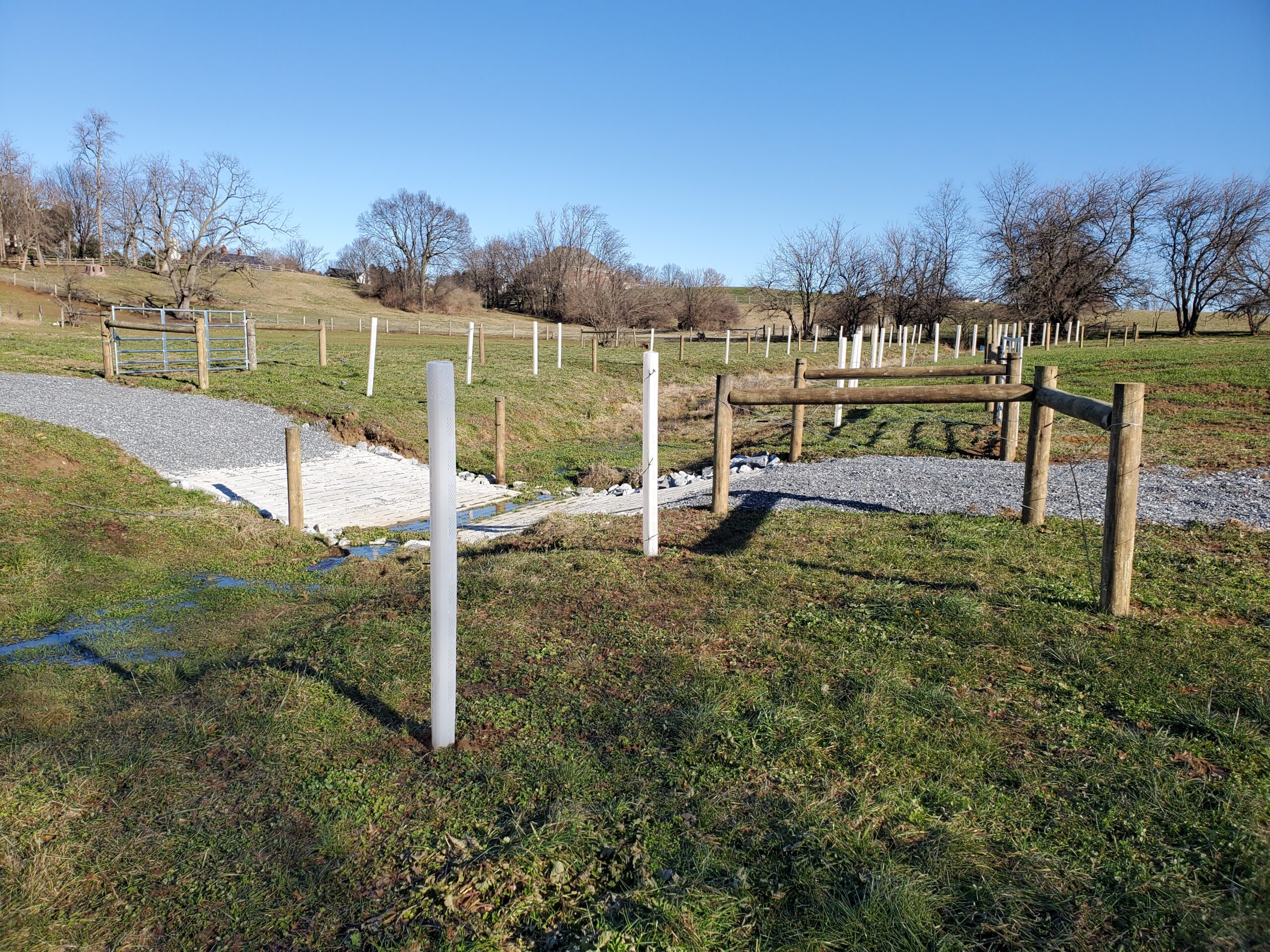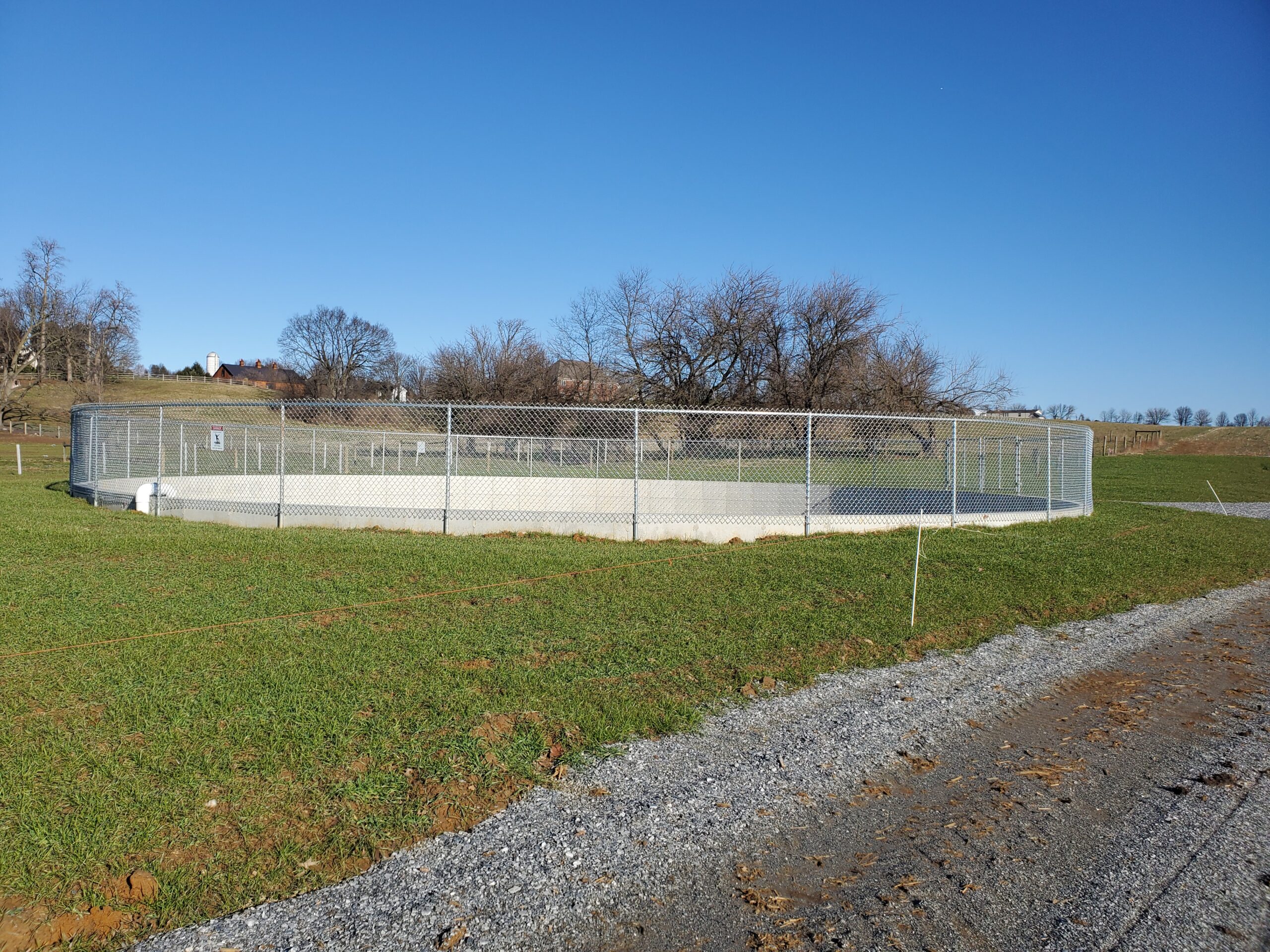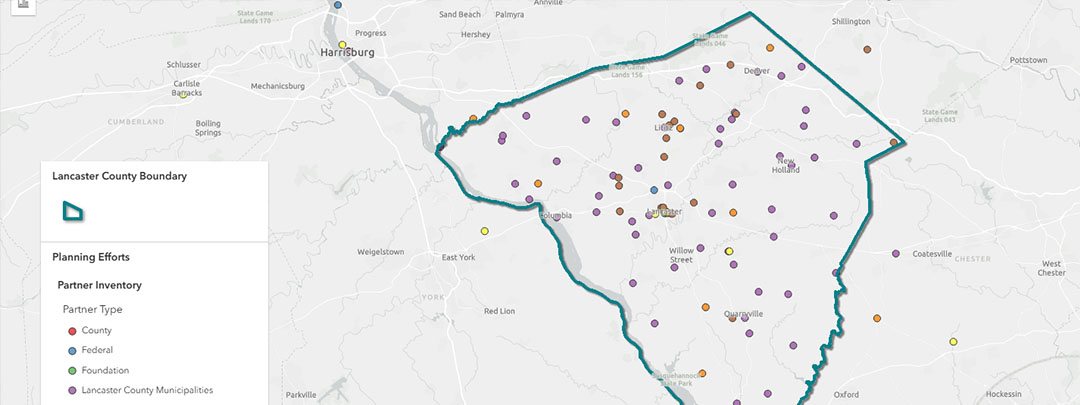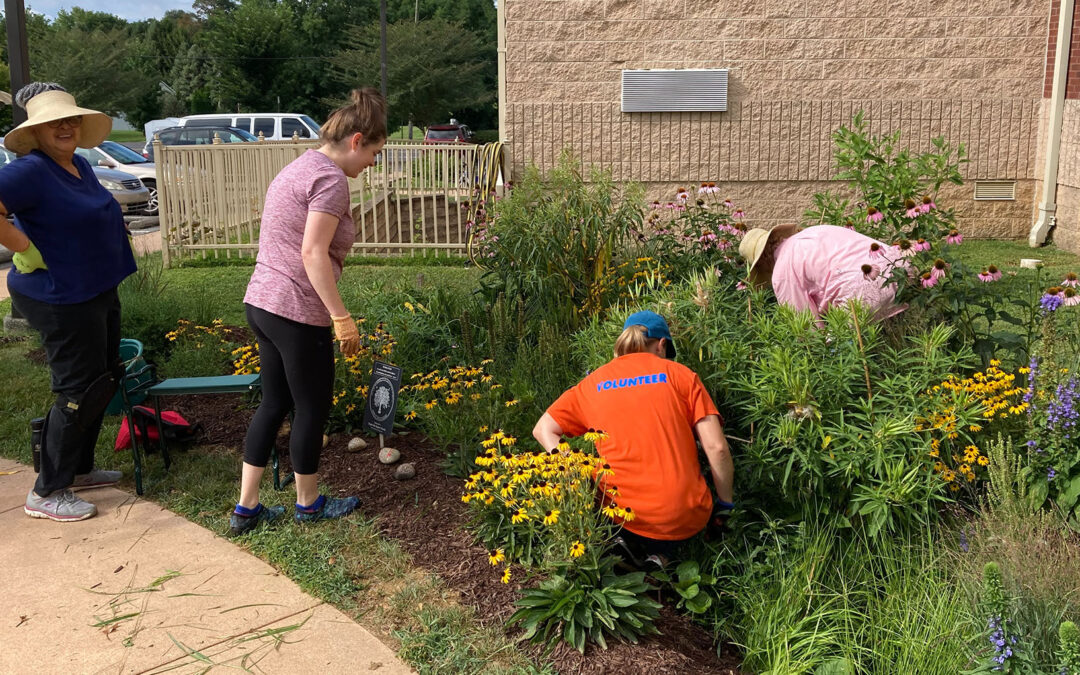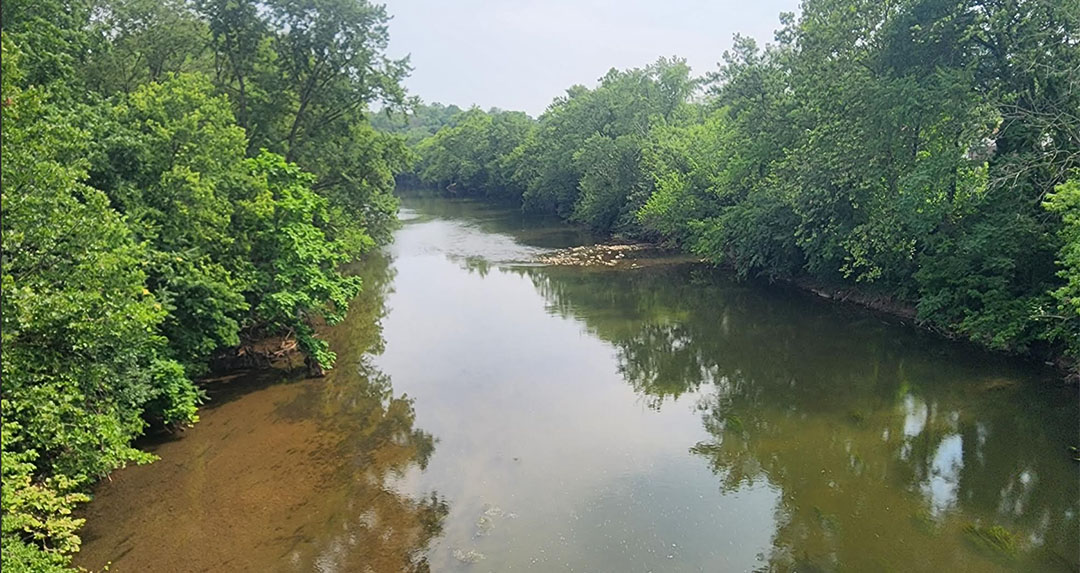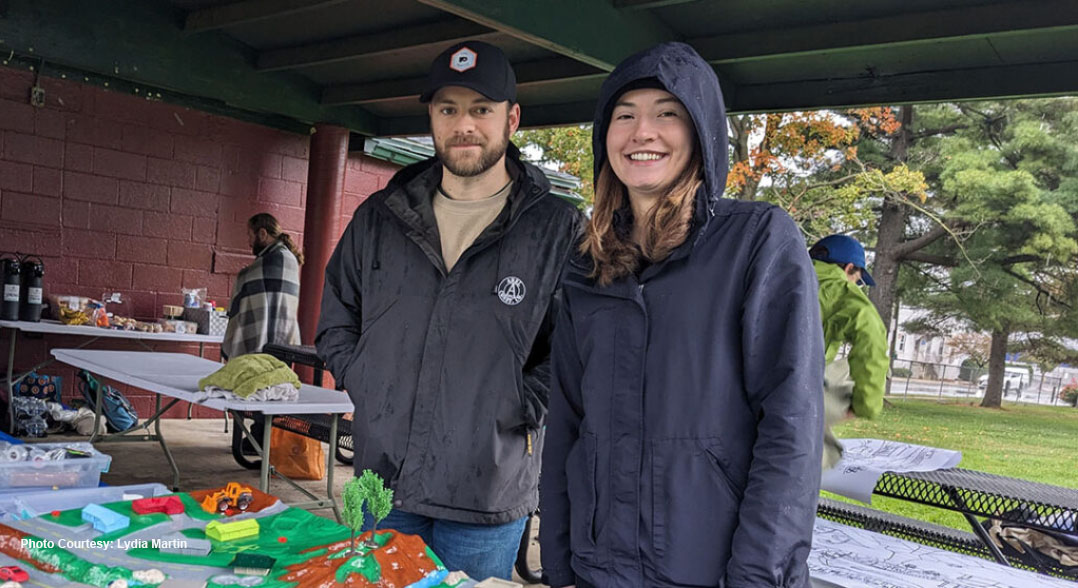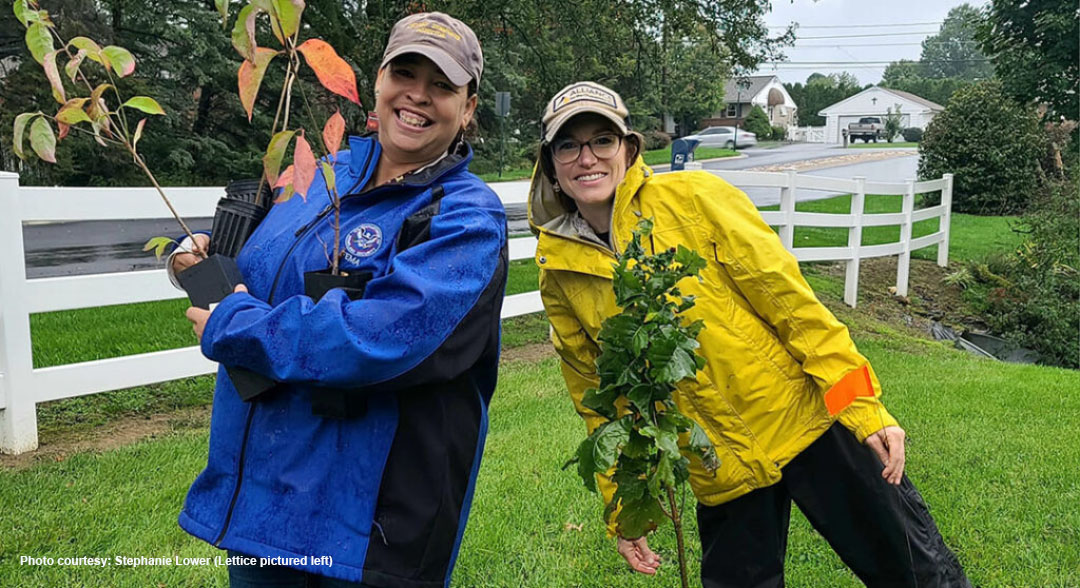Young Farmer Prioritizes Conservation in East Lampeter
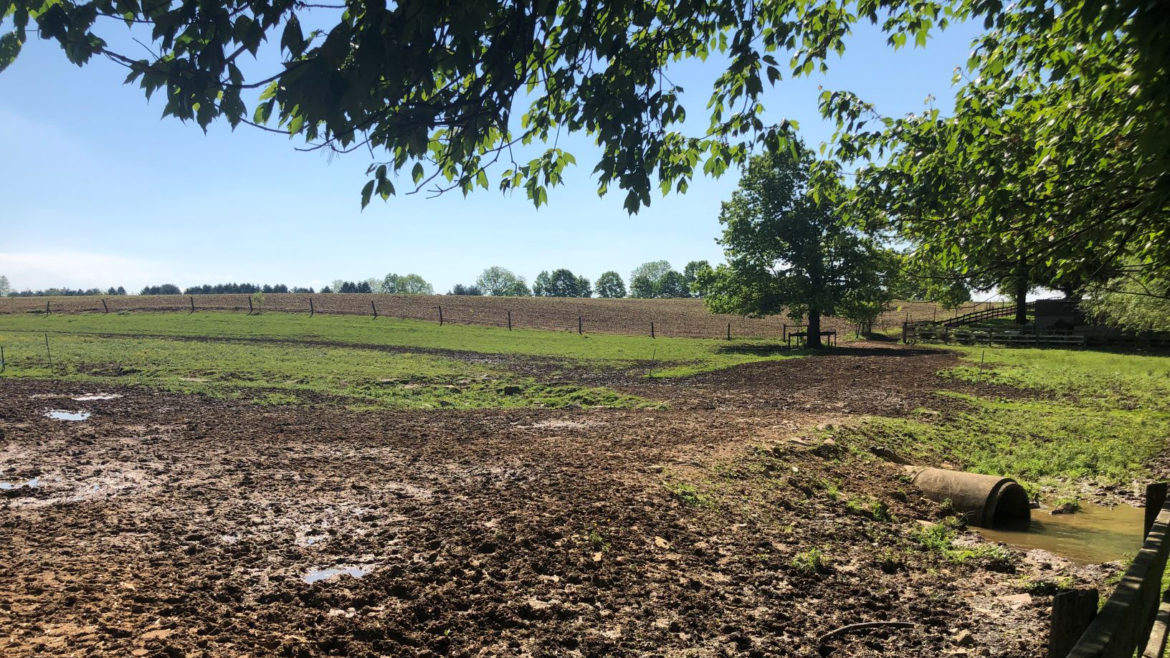
Every two months, Mr. Beiler found himself back in his family’s fields to spread another layer of “farmer’s gold” or manure. With inadequate manure storage, Beiler had to spread manure even when the ground didn’t need or wasn’t able to absorb the added nutrients. Like many farmers with livestock, Beiler was in need of a better manure management plan. And after inheriting the 72-acre East Lampeter farm from his father, Beiler decided it was a good time to re-evaluate the longstanding agricultural and management practices used on the farm.
Beiler turned to Lancaster Farmland Trust (LFT) for expert guidance on conserving his land, so he could be part of the solution for cleaner water for his family, farm, and community. LFT worked with Beiler to apply to the Lancaster County Community Foundation’s Clean Water Fund for financial assistance to install a new circular manure pit with a six-month capacity, in addition to a slew of barnyard improvements for better livestock management. With enough support from the fund, LFT and project partner TeamAg, Inc. oversaw the implementation of conservation practices that will not only improve the health and longevity of his livestock and land, but also result in significant nutrient and sediment reductions in the Lower Conestoga Watershed.
Manure improvements are mostly environmental, managerial, and economical, says Jeb Musser, Director of Land Protection at LFT. Less manure being spread at inappropriate times means less chances for nutrient runoff into the stream on Beiler’s property. It also means he can hold on to that manure for a time when his fields really need it. It becomes an asset rather than a burden. The animals certainly see benefit from the stream improvements, too. Keeping them out of the stream lowers their chance of injury and disease.
“We are excited for this project’s capacity to improve water quality locally, and its potential impact on future efforts across agricultural landscapes in Lancaster County, and beyond,” says Amanda Hickle, Lancaster Farmland Trust.
The project addresses the following CAP priorities:
- Round Manure Storage – 10’x68’
- Reception Pit – 12’x84’x8’
- Barnyard Concrete Heavy Use Area – 3,790 sq. ft.
- Roofed Concrete Heavy Use Area – 32’x60’
- Roofed Stacking Structure – 32’ x 44’
- Animal Walkway – 800 sq. ft.
- Access Road Surfacing – 17,040 sq. ft.
- Feed Storage Pad Surfacing – 10,900 sq. ft.
- Roof Gutters – 166 ft.
- Stream Bank Fence – 1,840 ft.
- Slatted Crossing – 2 at 240 sq. ft.
- Slatted Water Access – 1 at 192 sq. ft.
- Reinforced Gravel Approached – 576 sq. ft.
- Buffer Planting – 77 trees and tubes covering 24,350 sq. f t.
- Seeding and Mulching – 0.52 acres
Expected reductions include the following:
- 5,625 lbs of reduced nitrogen per year
- 2,562 lbs of reduced phosphorus per year
- 2.9 tons of reduced sediment per year


